
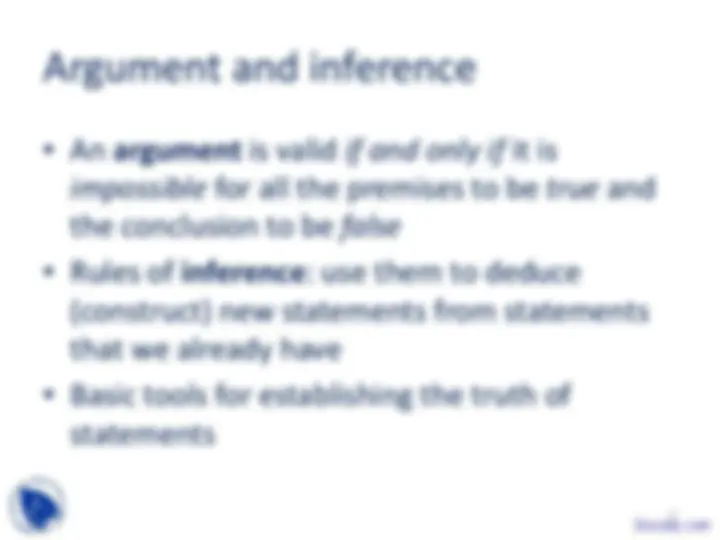
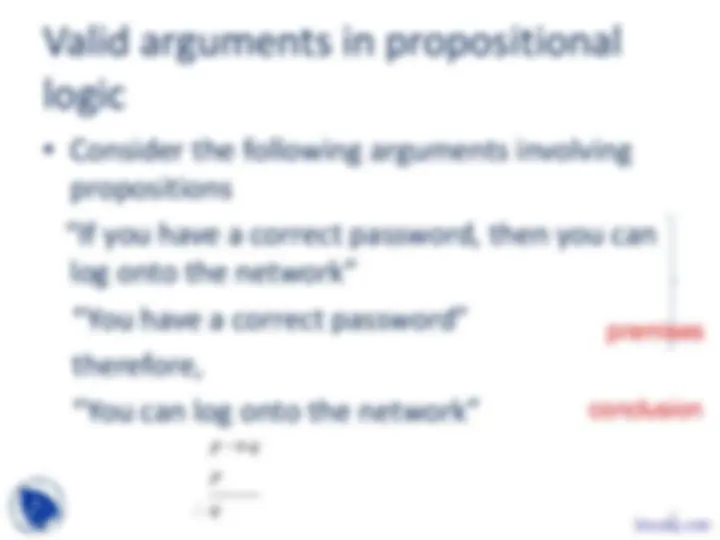
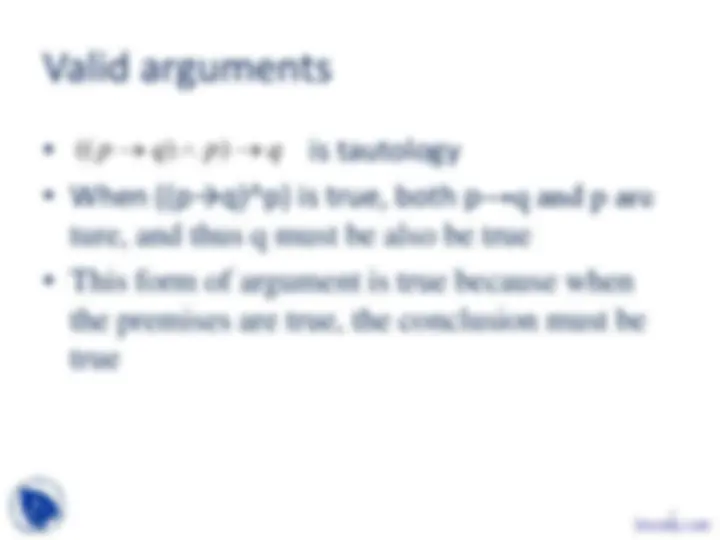
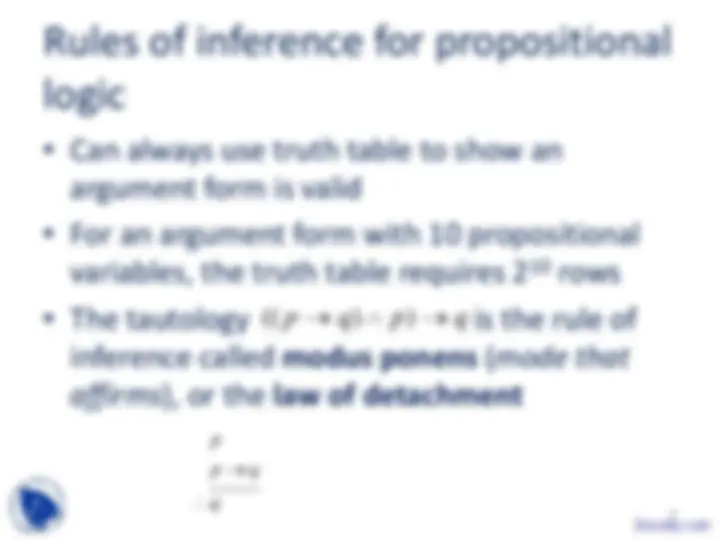
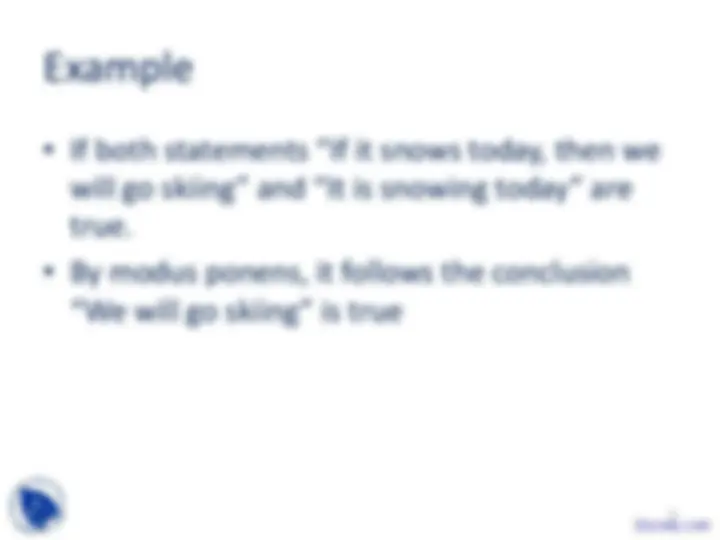
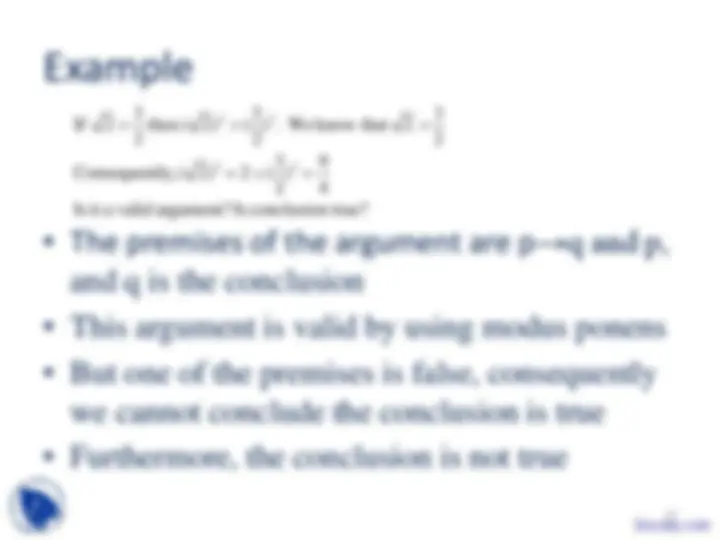
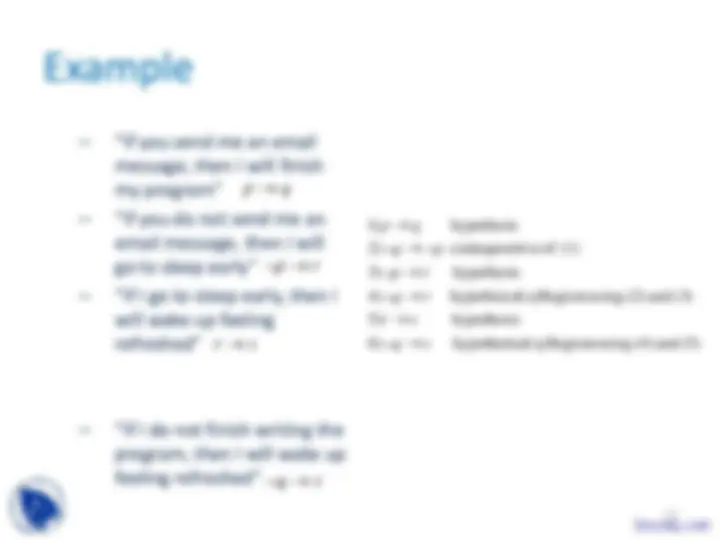
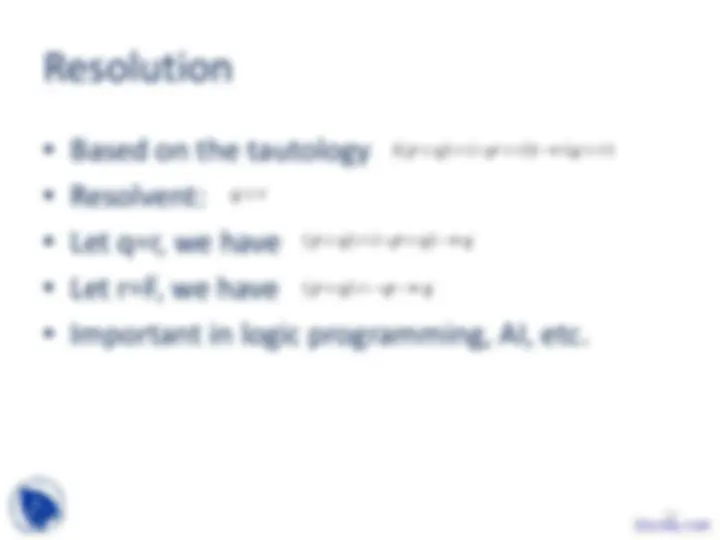
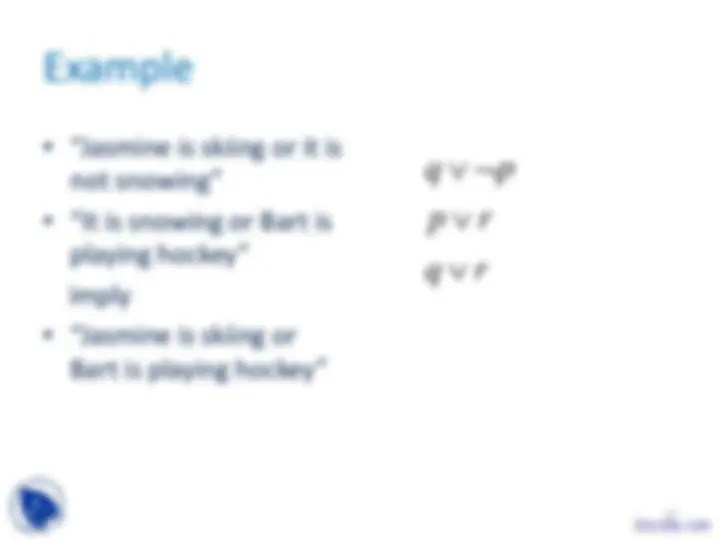
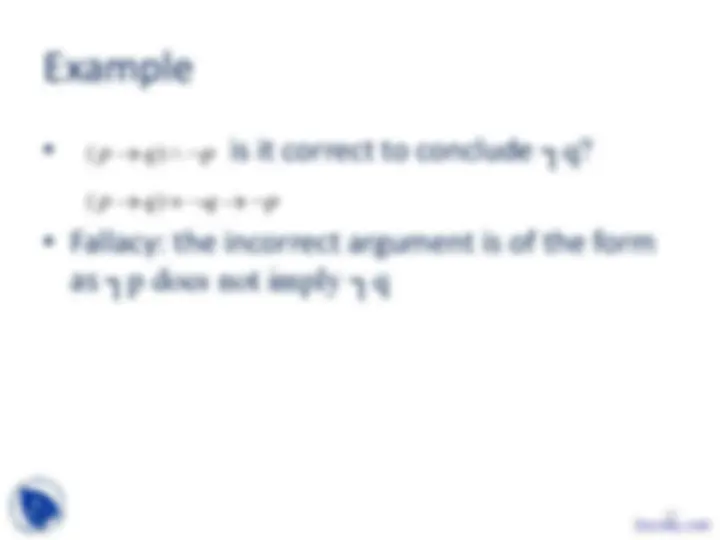
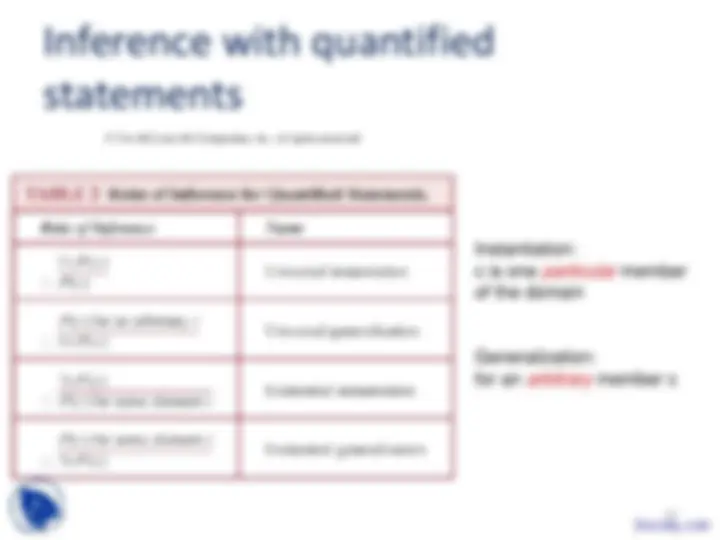
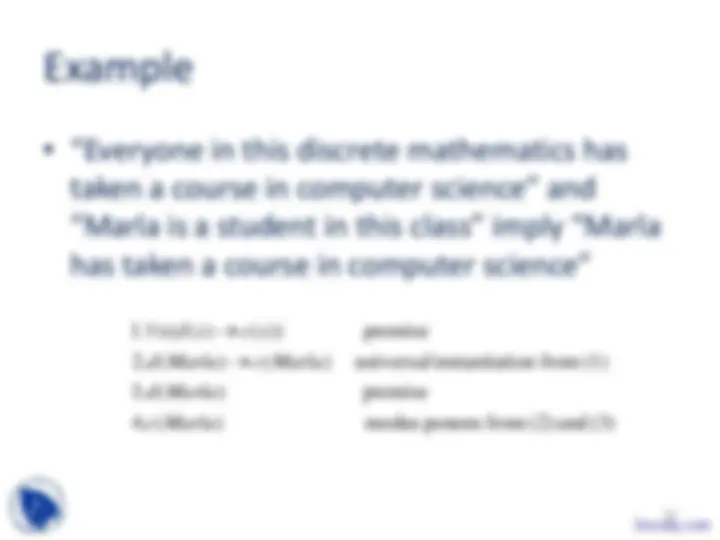
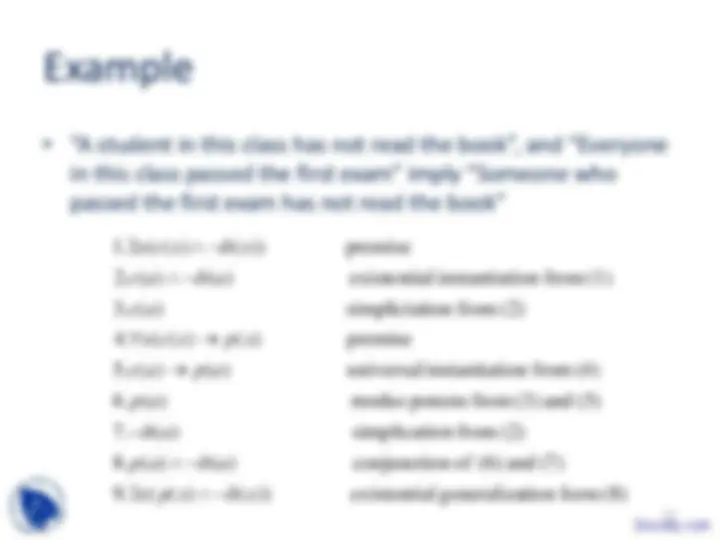
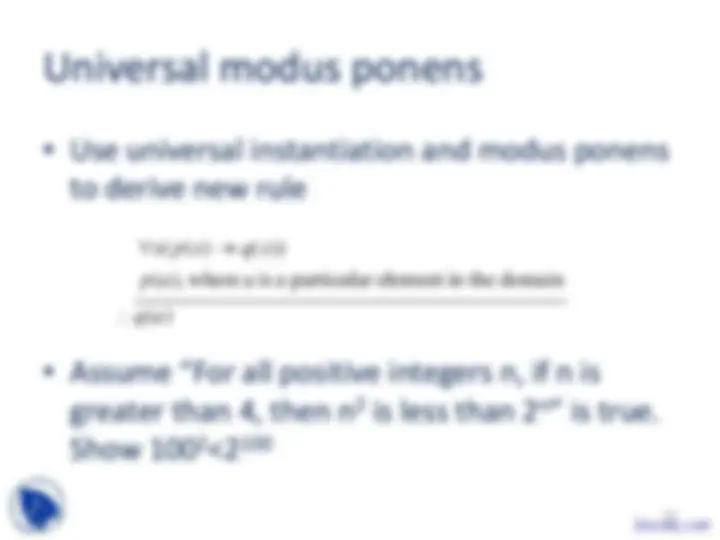
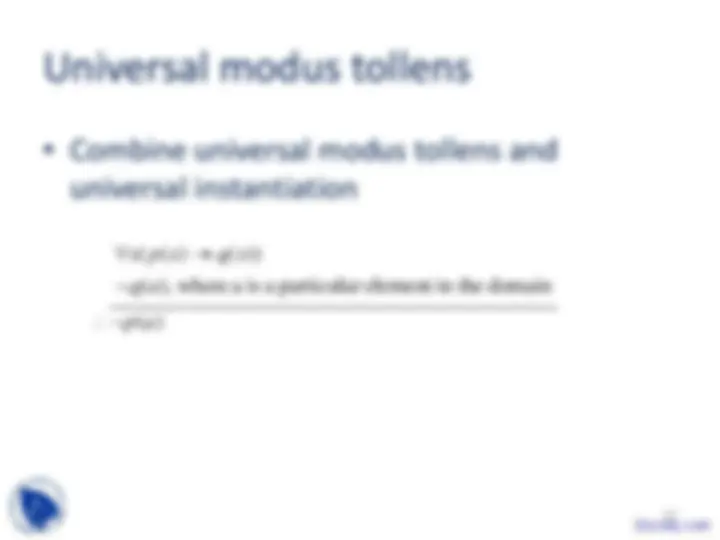


Study with the several resources on Docsity

Earn points by helping other students or get them with a premium plan


Prepare for your exams
Study with the several resources on Docsity

Earn points to download
Earn points by helping other students or get them with a premium plan
Community
Ask the community for help and clear up your study doubts
Discover the best universities in your country according to Docsity users
Free resources
Download our free guides on studying techniques, anxiety management strategies, and thesis advice from Docsity tutors
During the study of discrete mathematics, I found this course very informative and applicable.The main points in these lecture slides are:Rules of Inference, Sequence of Statements, Premise of Argument, Argument and Inference, Truth of Statements, Valid Arguments in Propositional Logic, Argument Form, Compound Propositions, Law of Detachment
Typology: Slides
1 / 23

This page cannot be seen from the preview
Don't miss anything!
















CSE115/ENGR160 Discrete Mathematics 01/26/
4
premises
conclusion
q
p
p q
∴
→
5
(( p → q )∧ p ) → q
“If you have access to the network, then you can change your grade” (p→q) “You have access to the network” (p)
so “You can change your grade” (q)
8
(( p → q )∧ p ) → q
q
p q
p
∴
→
10
Isitavalidargument?Isconclusion true?
4 )^9 2 Consequently,( 2 ) 2 (^3
2 ). Weknowthat 2 3 2 then( 2 ) (^3 2 If 2 3 2 2
2 2 = > =
6 ) hypotheticalsyllogismusing(4)and (5)
5 ) hypothesis
4 ) hypotheicalsyllogismusing(2)and(3)
3 ) hypothesis
2 ) contrapositiveof (1)
1 ) hypothesis
q s
r s
q r
p r
q p
p q
¬ →
→
¬ →
¬ →
¬ →¬
→
p → q
¬ p → r
r → s
¬ q → s
14
(( p ∨ q )∧(¬ p ∨ r ))→( q ∨ r )
( p ∨ q )∧(¬ p ∨ q )→ q ( p ∨ q )∧¬ p → q
q ∨ r
16
r s r s
p q r p r q r
p q r r s p s
→ ≡¬ ∨
∧ ∨ ≡ ∨ ∧ ∨
∧ ∨ → ∨ ( ) ( ) ( )
Show ( ) and imply
Therefore you did every problem in this book
17
(( p → q )∧ q )→ p
( p → q )∧ q
19
Instantiation: c is one particular member of the domain
Generalization: for an arbitrary member c
20
( ) modusponensfrom(2)and (3)
( ) premise
( ) ( ) universalinstantiationfrom(1)
( ( ) ( )) premise
c Marla
d Marla
d Marla c Marla
x d x c x →
∀ →